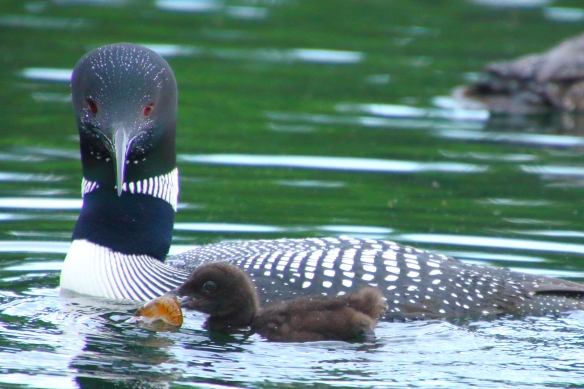by Zoë Goodrow
World Migratory Bird Day is on May 14th this year, where over 700 events and programs around the world will take place to educate the public on migratory birds and how to conserve them. Migration is a spectacular event – especially in Michigan. Two major flight paths, or “flyways”, run through Michigan. These paths are the route birds take between their breeding grounds up north and their overwintering grounds in the south. You can track this migration on the website birdcast.info. Nearly 400 species of birds pass through Michigan via either the Atlantic or Mississippi Flyway. Our Great Lakes habitat serves as a critical stop for migratory birds, resulting in exceptional opportunities for Michiganders to observe them. Because Michigan is such a critical stop for migratory birds, the availability of suitable habitat for them is essential for their survival. A study published in “Science” in 2019 said three billion birds have been lost in Michigan since 1970. There are species of migratory birds that are important to Michigan’s biodiversity that are threatened by habitat loss and other issues that impact environmental health.

One of the first species to pass through during spring migration is the common loon. A beloved and iconic species in our state, the common loon nests in northern Michigan. Common loons return to the same nesting site each year, and each year more nesting sites are destroyed from lakeshore development, damming, or poor water quality. Their diet consists of macro invertebrates and fish, which also share the same threats. Common loons can live over 30 years – because of their longevity and their place higher up in the food chain, they are considered indicator species of water quality and environmental health. In recent years, much research has been done to understand the impact of lead, mercury, and PFAS accumulation in common loons. Efforts to conserve loon habitat and increase the number of breeding pairs in Michigan have been underway for years, and numbers have been slightly rising. There are an estimated 500-700 breeding pairs in Michigan, which is a success given the goal of the Michigan Loon Recovery Plan is to maintain at least 575 breeding pairs.
Another migratory bird that is the focus of significant conservation efforts in Michigan is the purple martin. Although the global population of purple martins is stable, the Michigan population has been steadily and steeply declining for the past six decades. Over one-third of their population has disappeared in the last 50 years. This decline is a result of a combination of factors including nesting habitat loss, competition with invasive species, decreased prey availability from insecticide use, and climate change. Conservation efforts include providing nesting boxes in purple martin habitat. Research suggests that nesting boxes (often referred to as “condos”) installed by purple martin “landlords” across the state are the only thing keeping the species alive. There are numerous outreach programs in Michigan and beyond to educate the public about purple martins and the individual actions that can be taken to protect their populations, including limiting insecticide use, creating native plant habitat, and installing nesting boxes.

The Kirtland’s warbler is an exceptional conservation success story – one that shows how collaborative work and adaptive land management can lead to the comeback of a species. In 2019, this beloved songbird was removed from the endangered species list after once being nearly extinct. Scientists worked with land managers in Michigan to conserve and expand suitable habitat for the Kirtland’s warbler by creating and maintaining young jack pines stands across the state. This practice in combination with managing brown-headed cowbirds, who parasitize Kirtland warbler nests, are what led to the thriving population of Kirtland’s warbler we have in Michigan today.
The success story of the Kirtland’s warbler, and the stories of other important migratory birds in Michigan, are testaments to the importance of habitat conservation and restoration. At the Michigan Nature Association (MNA), we work to acquire, protect, and maintain natural areas that are home to important habitat for endangered and threatened migratory birds. With the help of organizations like MNA from the local to the national level, legislators, scientific research, and generous donations – more conservation success stories are possible. This migration season, see how you can help protect these species that are important to Michigan’s biodiversity. One action Michiganders can take is, at the recommendation of the DNR, remove bird baths and feeders to mitigate the risk of HPAI (avian flu) to migratory birds.

